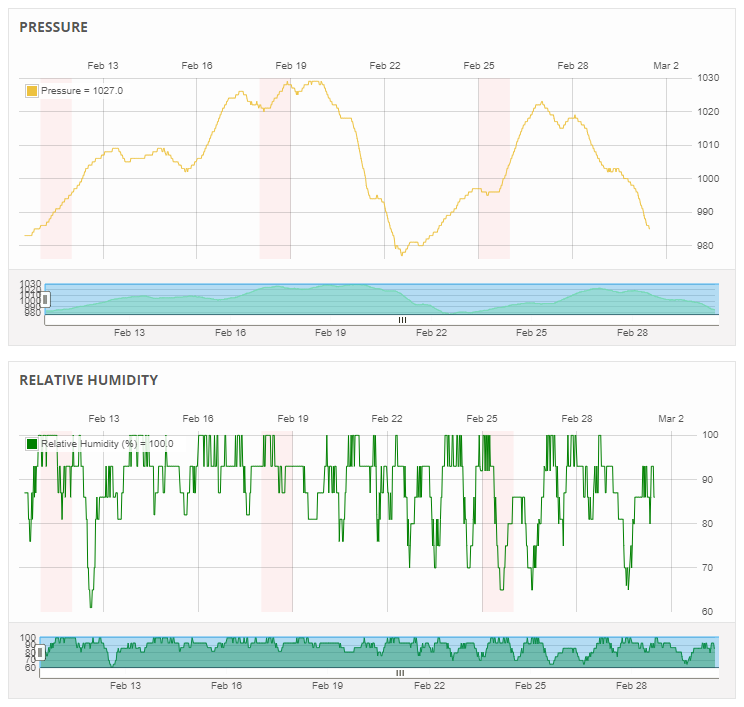All other things being equal, what you're probably seeing is variation caused by barometric pressure and relative humidity in your (probably air conditioned) laboratory. I'd bet that the air pressure in your area has increased between the first and second standard runs, causing the intensities to drop (or rather, the response of the GFPC detectors). Sealed Xe detectors (for the JEOL folk) aren't impacted by this*.
We can get pretty big swings of 50mbar or more over a few days (see below) and this can cause havoc on our standard intensities, meaning we have to re-standardise frequently.

Fortunately, PfE has a standard drift correction to deal with this but be cautious, I believe it will apply a linear correction between one set of standards to the next when the weather is anything but linear! It can be caught out by sudden drops in pressure (e.g. thunder storms)**.
For example, imagine we ran the standards on the 19th Feb and the 28th Feb, PfE will correct for the drift between these two dates (not that it would be much), but would be oblivious to the large drop in air pressure in between, causing the standards intensities (and the unknowns!) to increase. The answer is obviously to standardise much more frequently, but at some point you actually have to measure the unknown samples and stop using your probe as a rather expensive weather station!
*At least not that I've ever spotted. Does anyone have a TAP crystal using a sealed Xe detector? I've been curious whether the drop in sensitivity is a fair trade for increased stability over time for long maps.
**In lieu of PfE releasing an omniscient edition, I've thought about building a small weather station out of an arduino and some cheap air temperature, humidity and pressure sensors and logging all this, with the goal of ultimately being able to calibrate and correct for it in PfE.